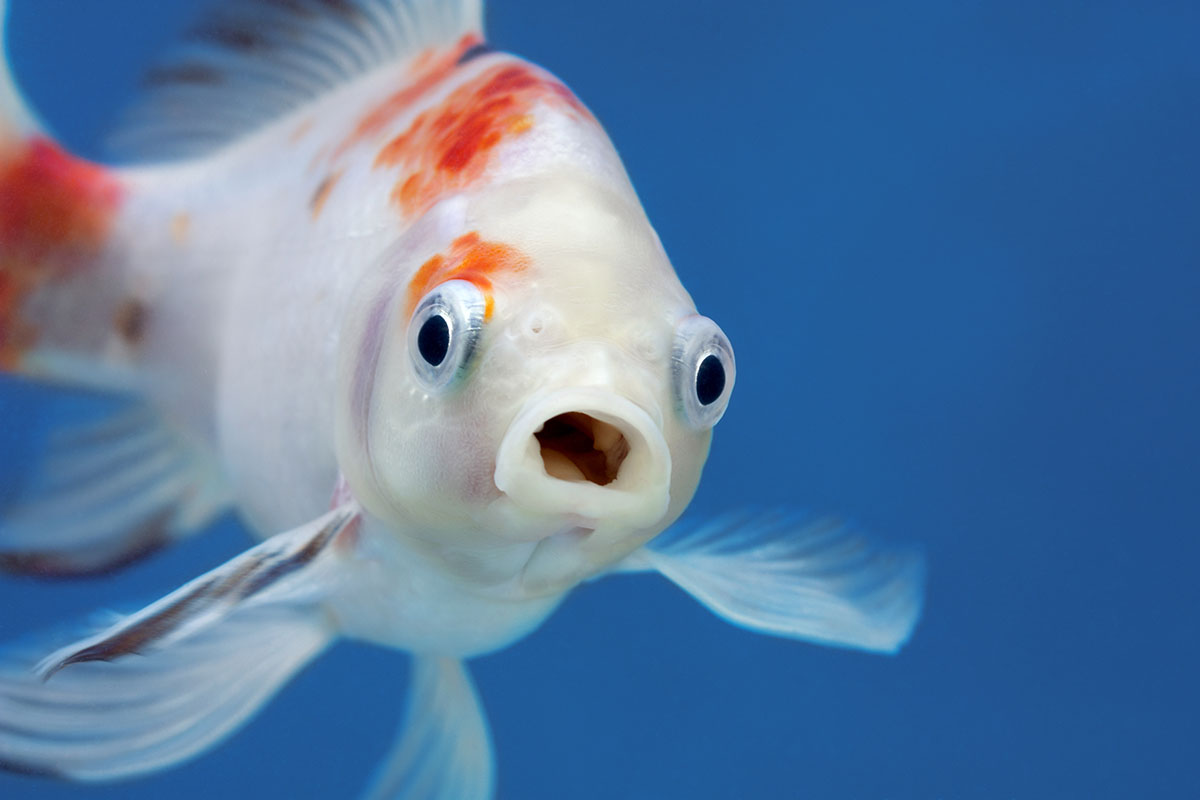The Nitrogen Cycle
Maintaining a healthy freshwater aquarium environment for your fish doesn't happen by accident. Raising healthy, happy fish requires keeping just the right balance in your aquarium's water quality. This involves establishing a healthy nitrogen cycle in your tank.
Don't worry if this sounds a bit intimidating. The nitrogen cycle is actually pretty easy to understand.
How the Nitrogen Cycle in Your Aquarium Works
The nitrogen cycle refers to how fish waste is naturally processed in your aquarium. It's a "life cycle" where nature (like plants, algae, or microorganisms in your aquarium water) creates food, your fish eat the food, they produce waste, and nature breaks down the waste so your fish can thrive and have more food.
In more technical terms, it works like this:
-
Freshwater fish release waste in the form of ammonia (NH), which is toxic to all aquatic organisms. (Other forms of waste also contribute to ammonia, like uneaten food and dead plant material.)
-
Beneficial bacteria (called nitrifying bacteria) live in places like a biofilter, gravel bed, or on solid objects in the aquarium. These convert ammonia to nitrite (NO), which is also toxic.
-
A different set of nitrifying bacteria in your aquarium convert the nitrites to nitrates (NO). Nitrates are not toxic to fish unless their levels become too high.
-
Aquarium plants consume nitrates, which help them grow. When you have a fully established nitrogen cycle in your aquarium, you want to ensure nitrate levels don't get too high by doing partial water changes of about 10% per week.
Biofilters Provide Vital Beneficial Bacteria to Your Aquarium
Aquariums can utilize three types of filtration: mechanical, chemical, and biological. Biological filtration refers to filtration via the nitrogen cycle. The biofilter provides a growth surface for both types of beneficial bacteria (the one that consumes ammonia and the one that consumes nitrites). These bacteria are naturally present in your water, but you need a filter so you can grow enough bacteria to maintain a healthy nitrogen cycle.
You can purchase biofilters that provide only biological filtration or filters that provide biological filtration along with mechanical and/or chemical filtration. For example, sponge filters provide biological filtration by allowing bacteria to grow on the sponge's surface while trapping solids via mechanical filtration.
A few filters that provide biological filtration to consider include:
-
QuietFlow Canister Filter: Provides all three filtration methods and works with freshwater or saltwater aquariums.
-
SmartClean Power Filter with EcoRenew Filter Cartridge: This advanced filtration system uses biodegradable, activated carbon filters with an adjustable flow rate. The filter also makes water changes easy with just three simple steps.
-
QuietFlow Internal Power Filter: A fully submersible filter that uses all three stages of filtration. Can be positioned vertically or horizontally.
-
QuietFlow Internal Power Filters with SmartClean Technology: Works with both framed and frameless aquariums. Features an adjustable flow rate, biological filtration, and a cartridge infused with carbon. Provides quick and easy water changes.
If you have a small betta tank without a filter, Betta Beads provide beneficial bacteria to help maintain a healthy cycle while entertaining your betta fish.
How long does it take for an aquarium to cycle?
If you have a new freshwater aquarium, it can take some time to fully establish your nitrifying bacteria (also referred to as cycling your aquarium). The process won't start until you add your first fish. After that, it can take several weeks to a couple of months to fully establish your nitrifying aquarium.
When you start, add just a few fish that can handle the higher levels of ammonia and nitrites you'll have until the nitrogen cycle is established. Stocking your tank full of fish right away can spell disaster, causing ammonia and nitrite levels to rise to unsafe levels — a condition known as "New Tank Syndrome." It can lead to fish loss and prolong the cycling process.
Ammonia levels typically begin to rise by the third day after you've added fish to your new aquarium. By the second week, you should see nitrite levels rising. You'll know your tank is fully cycled when nitrates are being produced, and ammonia and nitrite levels are at zero. The whole process typically takes three to eight weeks.
Until the nitrogen cycle is fully established, test the ammonia and nitrite levels every two to three days. You'll likely need to change out about 10 to 25% of the water every few days to ensure ammonia and nitrites don't reach toxic levels.
Establishing a Nitrogen Cycle Takes Time and Patience
Establishing a healthy nitrogen cycle doesn't happen overnight. It requires time and patience. And even after you've fully cycled your aquarium, you need to be diligent about maintaining the water quality.
Once you've established a nitrogen cycle, you can keep your aquarium healthy by stocking it with fish gradually, avoiding overfeeding, and testing and changing the water regularly. Make sure you change out your filters regularly too, according to the instructions.
The whole process takes time, but it's worthwhile in the end. You'll have a stable, healthy aquarium full of beautiful fish that provide peace and relaxation to your home.





